
The Elite Aria fan is seemingly the smartest of smart trainer fans out there today, linking to a wide assortment of indoor cycling tech – be it power meters, smart trainers, heart rate sensors, and even body temperature sensors. All of it automatically controlling the fan speed/intensity up to nearly 50KPH winds, and all of it adjustable to your bodily whims. Oh, and it has fancy carbon filters to theoretically clean the air being blown towards your face.
The question is – is it worth $350? And then the secondary question – how does it compare to the also indoor-cycling tech Wahoo Headwind fan that was released half a decade ago? Both of those questions I’ll attempt to answer here, based on real-world usage of both fans.
In the case of this post, this Elite Aria fan is a media loaner, and it’ll go back to Elite. After which, I’ll go out and get my own, via normal retail channels (the Wahoo fan I bought years ago). If you found this review useful, you can use the links at the bottom, or consider becoming a DCR Supporter which makes the site ad-free, while also getting access to a mostly weekly video series behind the scenes of the DCR Cave. And of course, it makes you awesome.
With that, let’s get into it.
In the Box:
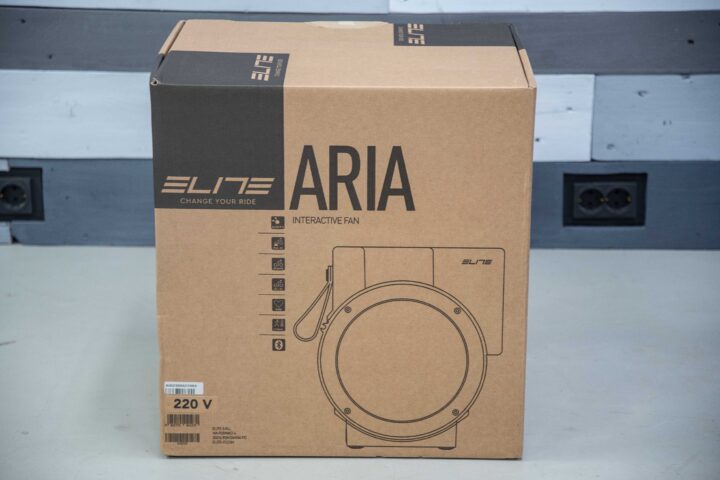
I appreciate a simple box. Or at least a simplistic unboxing experience. Partially because it minimizes all the photos I need to take, and partially because it makes it quicker to start using the actual product. Elite has made really good headway in recent years in making indoor trainer products that require virtually no assembly out of the box – and this falls into that camp.
After opening it up, you’ll find the fan sandwiched between some protective cardboard. From there, simply lift it up, remove the plastic, and…well…almost done.
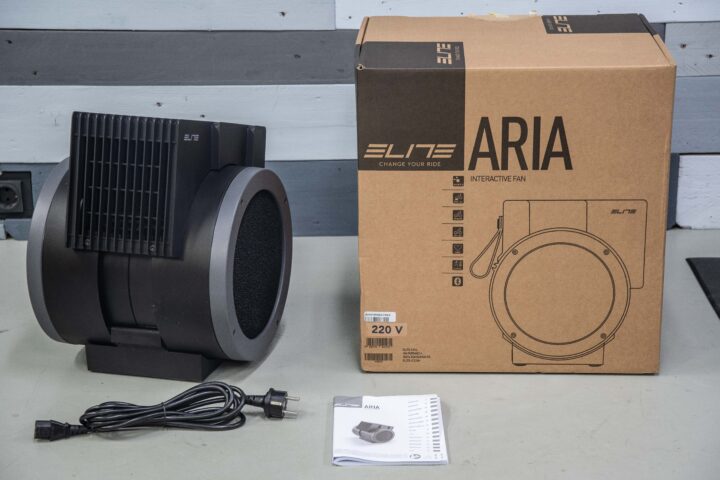
In the box you’ll also find the power cord. Take that, and stick it in the back of the fan to complete your installation. Further, there’s a small manual/paper thing in there.
You can cut that up into a million pieces and throw it in front of the fan – watching it jettison out the other end at 50KPH. It’s good fun…till you have to clean it up. But hey, that’s what 5-year-olds are for.
With that, let’s start using it.
Aria Smart Fan Usage:
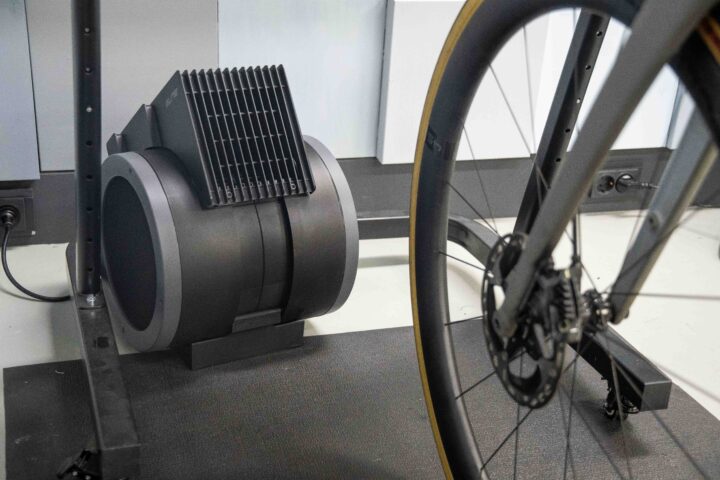
When it comes to placement, most people will place it in front of the bicycle, and often offset to one side or the other (especially if you have a trainer desk). However, what’s handy about the Elite fan is that it has 10 adjustable positions in terms of the actual rotation of the fan itself. Thus giving you more flexibility for where you place it, the whole top of the fan rotates. You can either watch the video, or see the below for a mere 3 out of the 10 possible positions:
Next, on the top of the fan are three groups of buttons. The first one is the power button itself, which turns it on/off. Then, there’s the fan speed level (controlled by the two arrows). And finally, there’s the toggle between different sensor control modes (e.g., trainer/power button/etc).

Frankly, all of these work exactly as you’d expect – and so re-iterating how a power button works seems a bit silly. Instead, let’s focus on those sensor connectivity modes, so that piece is certainly unique here.
To pair up the sensors, you’ll first download the Elite myETraining app, which is Elite’s wider-purpose indoors cycling app. It has lots of features (some paid), but the fan piece is totally free. Once downloaded, you’ll see the dedicated block for the Aria fan. Simply tap that to get started:
At the top of the main, you’ll see the current state of the fan connection. Red is not connected, green is happy days. Below that, you’ve got the different fan modes. Manual control allows simplistic-style control of the fan, whereas each of the different sensor options below it uses those sensor types. The Elite Aria fan connects to the following sensor types:
- Cycling smart trainers (ANT+ FE-C)
- Cycling speed sensors (ANT+)
- Cycling power meters (ANT+)
- Heart rate sensors (ANT+ & Bluetooth Smart)
- CORE temperature sensors (ANT+ & Bluetooth Smart)
The main reason you see ANT+ only for the cycling bits, is that it ensures the fan doesn’t accidentally take up the single-concurrent channel for Bluetooth for many slightly older smart trainers or power meters. Whereas virtually every smart trainer/power meter on the market is dual ANT+/Bluetooth (which have unlimited ANT+ connections). Meanwhile, for both heart rate sensors & CORE temperature sensors, by default it’ll use ANT+ (again, to preserve those single-channel Bluetooth connections). You can manually toggle on Bluetooth connectivity in the settings panel.
On the first page is the manual controls, whereas each of the sensor-driven modes will pop-up a pairing menu, to pair the sensor. Here’s an example for the power sensor one:
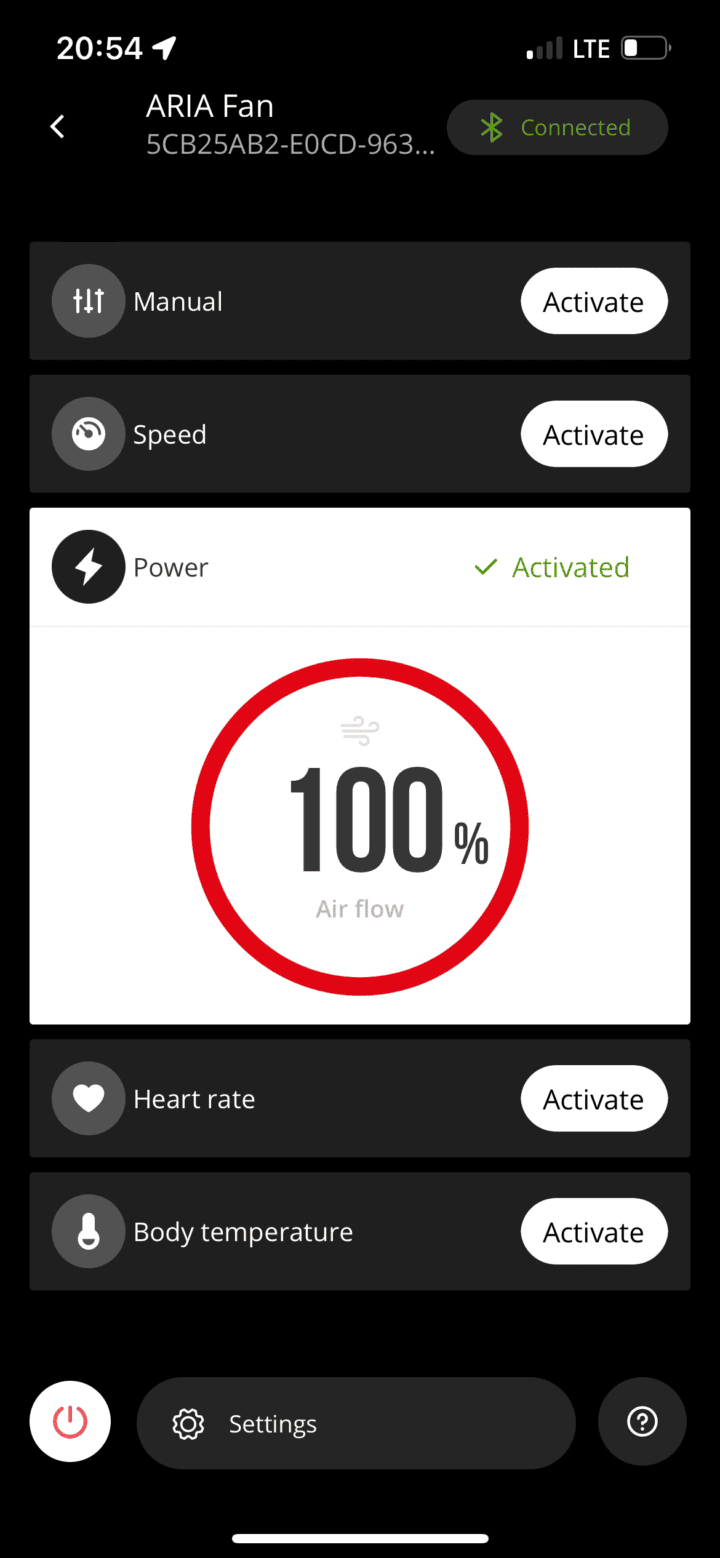
Once a sensor is paired, it’ll show up on that page, as well as in the settings page, where you can see all your paired sensors:
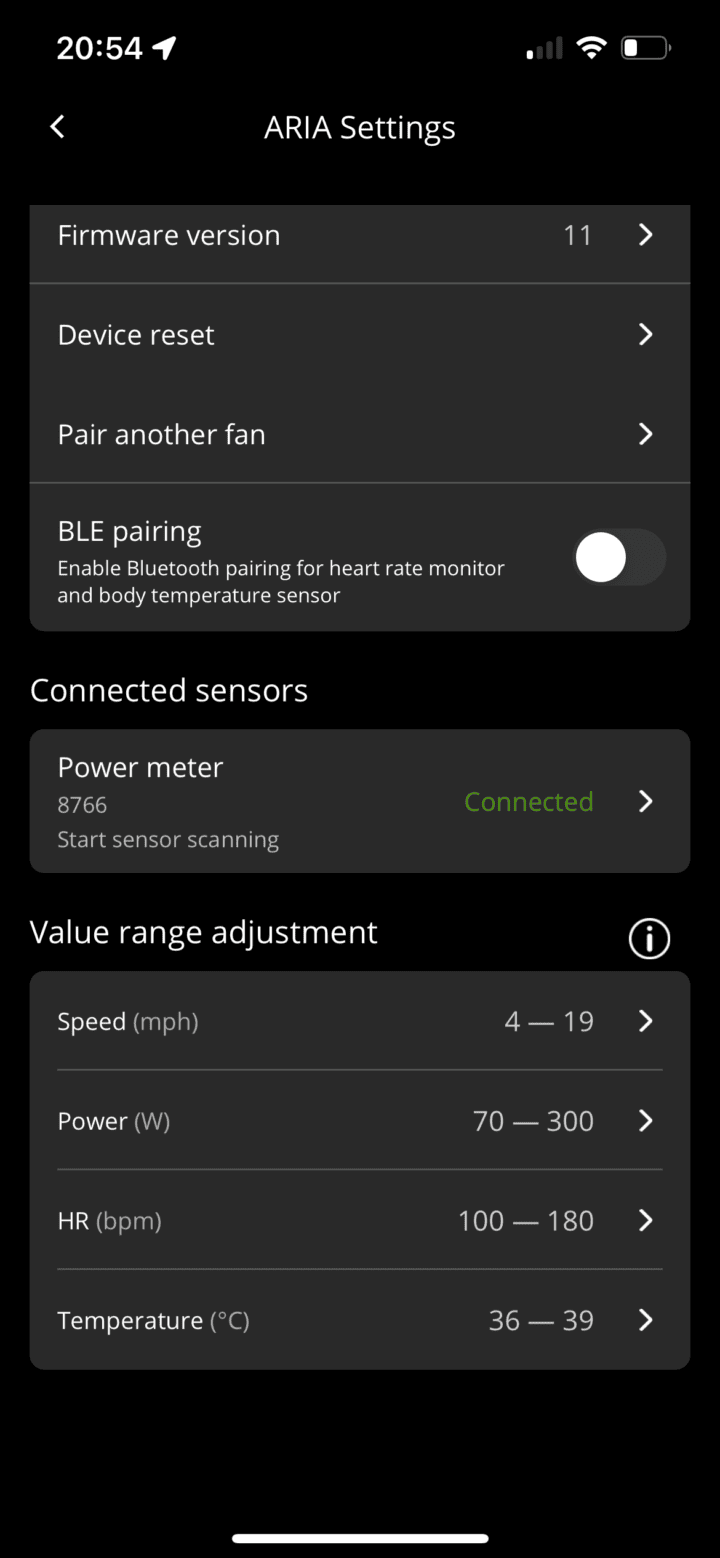
Down at the bottom of that page you can adjust the ranges for each of the fan speeds. This is essentially giving you a bit more control over where the lower/upper limits are. For example, you probably want full power fan regardless of whether you’ve got a heart rate of 175 or 180bpm – both are high and both want immediate cooling. Whereas for power, you might actually want that tweaked a bit more.
Remember that in addition to using the app to toggle between these modes, you can also use that settings button on the front of the fan, which will toggle through these modes and put it into a passive listening mode so the next time you jump on the trainer, it just starts automatically.
That’s arguably the single biggest reason to have a connected fan like this. If you link the fan to your trainer, then as soon as the trainer activates some power floor, it’ll start pedaling. However, the one thing to keep in mind is that if you tie the fan speed to either power or speed values, that means while you descend it could cause the fan to decrease power/wind or even turn off. Thus, I’d strongly recommend instead aiming for connecting to heart rate, if anything at all.
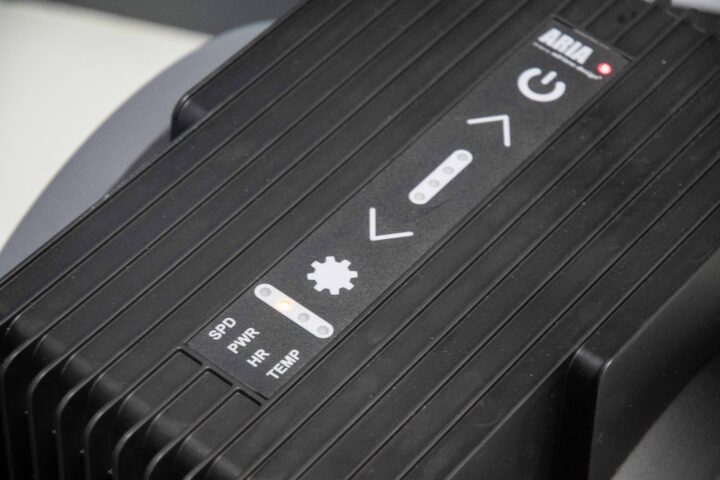
Next, you can also update the firmware of the fan. For that though, you’ll use Elite’s dedicated app for firmware upgrades, Upgrado. For real, it’s called Upgrado…I think that that’s amazing. This app has one purpose in life: Upgrading your Elite device firmware, no matter the device. Again, super quick and easy to use – the upgrade took less than 60 seconds.
Next, what about air/wind flow? In other words, how good a blowing job did it do? Well, I didn’t have any cooling issues while using it. It felt like a nice strong column of air – and obviously at those speeds, a very forceful one. For fun, and because this is the kind of geek I am, I put up my wind sensor that I normally use to test drones in high-wind conditions, and tested out the speeds recorded at different distances up to my face. Here’s the fan speed directly out of the front of the blower – I show this in the video a fair bit:
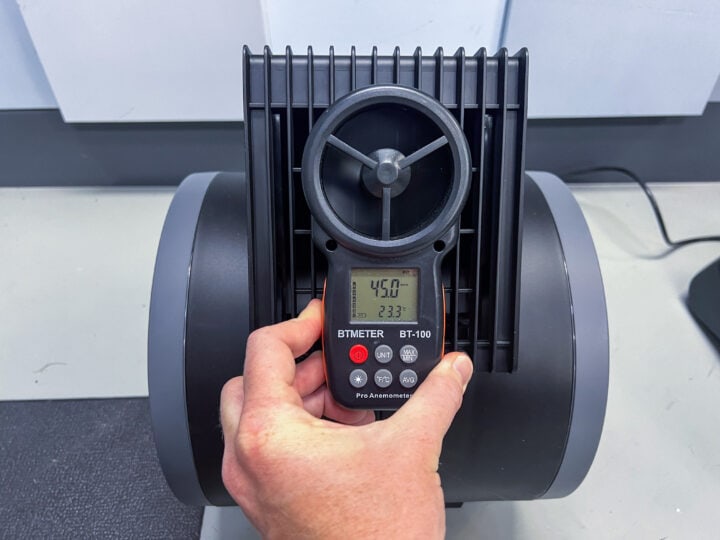
Whereas roughly a meter or so later, it was less than half that strength. Both the Wahoo and Elite fans were near identical at both on-unit and normal body distances.
I couldn’t really think of any reason to measure it much further than that, or anywhere in between for that matter. My head isn’t usually down at the front wheel, and if it is while Zwifting, then something has gone horrifically wrong.
Finally, what about the filters? Honestly, I don’t have a good way to test that or the claim associated with it. So, let’s focus on what it does. First, the filters are “activated carbon filters”, which Elite primarily focuses their marketing/use cases on both “removing odors” as well as “removing pollutants”.
Elite doesn’t specify on their technical specs the exact levels or microns of stuff it’ll remove, instead saying “Activated carbon filtration is a technique used for air purification, where a gas stream is passed through a filter that contains activated carbon. This filtration process takes advantage of the porous structure of activated carbon, allowing it to effectively absorb various volatile organic compounds found in the air, thus removing air pollutants.”
As I said, even if I did have those specs, I don’t really have any way to technically validate that in a controlled environment. I can and do test deeply for lots of other silly things, but this is a tricky one. I’ll leave that cost/benefit equation up to you.
Instead, note that Elite says you should aim for replacing the filters (there is one per side) every 500 hours, and that a set of replacement filters is 15EUR (includes two filters) – which seems pretty darn reasonable to me, especially for something you’d likely do every 1-2 years. When the 500 hours of time has passed, the Aria fan will warn you with a flashing red light (but will otherwise function normally). Replacing the filters is relatively easy, you’ll just unscrew the four screws on the side of the fan frame, to pull it out:
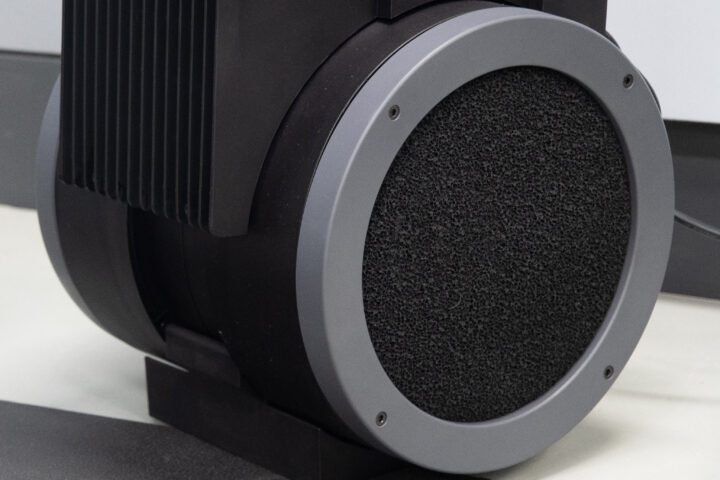
Then simply swap out for the new filters you bought. Quick and simple.
I think for many of us using our indoor trainers inside dusty/etc garages, it’s probably not a bad idea to have the air coming right from the ground be filtered before hurtled towards our gasping open-mouthed faces at 50KPH. But of course, proving that scientifically is probably tricky.
Elite Aria vs Wahoo Headwind Fan:

There are essentially two fans most people will compare the Elite Aria fan with: The Wahoo Headwind, and then one of the various Vacmaster fans. While the Vacmaster fans are amazing (seriously, they are), they don’t pair with smart trainers/etc, so in this context I’m going to set them off to the side and focus on the main two units that connect to indoor training gear. The same goes for the newish JetBlack indoor cycling fan seen on Zwift’s site, which has a handy remote, but doesn’t directly pair with smart trainers/etc
The Wahoo Headwind fan has, of course, been around the block for 5 years now, and in some ways, that shows. Like many of Wahoo’s offerings from last decade, they haven’t been refreshed, and thus are missing some of the unique features that Elite has put forth. Of course, these days the Wahoo fan is a bit cheaper at $299, versus Elite’s $349.
So, let’s look at the physical unit differences first, here’s the two side-by-side:
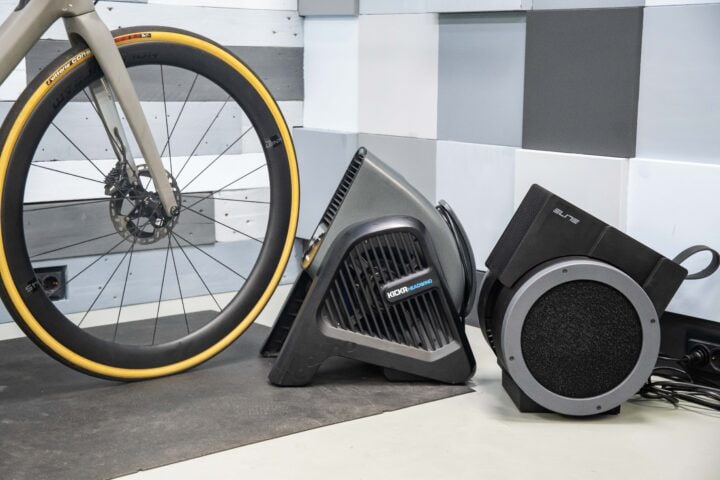
Core physical on-unit differences:
- Elite fan has 10 adjustable positions, Wahoo has no adjustability
- Elite fan has two carbon-activated filters on both sides to filter air being pulled in
- Elite fan has a (leather) handle, Wahoo fan has a grip-spot at the top
- Wahoo has a nice place to wrap the power cord around it, whereas Elite’s power cord detaches – albeit also technically wraps around the side of the filter circle as well for storage
- Both fans allow you to change modes on the top/front of the unit
- Both fans have physical buttons on the front for adjusting fan speed
- Both fans have essentially the same max fan speed of ~30MPH/48KPH
- Both fans have essentially the same column of air going towards you
- Both fans have roughly the same size/volume on your floor
Now, at this juncture, looking at the physical differences, it’s pretty clear Elite has the advantage from a physical unit standpoint. There’s really no comparison here. Even if you don’t care about the carbon filter situation of the Elite Aria fan, the adjustability alone is beneficial (whereas with Wahoo, if you need to adjust the vertical side, you have to find something to prop it up – albeit, the column of air is pretty tall already).
Now, then we get to the tech side of things, in terms of connectivity. Let’s start with the sensor types they connect to:
- Both fans connect heart rate sensors for control (but ANT+ for Wahoo, versus both ANT+ & Bluetooth for Elite)
- Both fans connect to smart trainers for control (ANT+ FE-C trainers)
- Both fans connect to cycling speed sensors for control (ANT+ speed sensors)
- Elite fan can connect to power meters for control (ANT+ power meters)
- Elite fan can connect to body temperature sensors (ANT+ CORE sensor)
- Wahoo fan can also be controlled by Wahoo ELEMNT bike computers, as well as Wahoo watches, and even a handful of 3rd party apps
- Both fans have ability to upgrade firmware
- Neither fan connects to Google Home, or Apple Home/Homekit (smart home/automation platforms).
As you can see from the above, the main areas they connect with are covered by both companies (trainers, heart rate sensors, speed sensors). However, if you have a heart rate sensor that’s Bluetooth only, then only the Elite fan can connect to that. Likewise, Wahoo’s fan can’t connect to the CORE body temperature sensor either. Inversely, Wahoo’s fan can be controlled by their bike computers and watches, and a few smaller 3rd party apps.
Now finally, both fans have their own manufacturer apps that can control them. Wahoo’s control is built into the self-titled Wahoo Fitness app (iOS/Android), while Elite’s app is the Elite myETraining app. Both apps have tons of functionality for other indoor training bits, but each dedicates a small slice to the fan control portion.
I outlined the Elite app earlier in the review, and the Wahoo app in that review, however, you can basically see the entire Wahoo app fan sections above.
One minor item is on the current firmware for the Elite Aria fan, it’s not automatically starting the fan after a passive timeout of 5 minutes – if connected to a smart trainer. Elite says they’re going to change that in the next firmware version slated for later this month. Else, you have to either press the physical fan button or open the app to activate it. Also, while I did have some connectivity issues with the Elite app, after some troubleshooting I figured out it was my phone. I changed to a secondary phone and it worked flawlessly.
Ultimately, at this point Elite wins on virtually every feature category except the ability to use the Wahoo bike computers/watch for control – or other apps for control of the fan. But I think almost everyone is gonna either use the built-in app or sensor-driven control.
Wrap-Up:
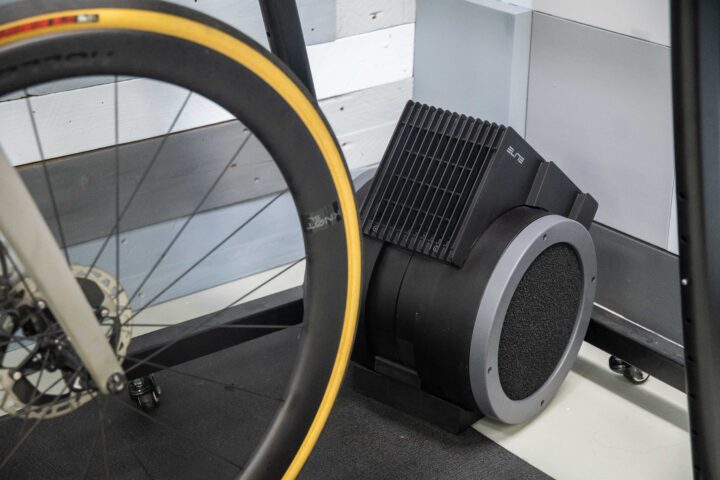
There’s no two ways about it – the Elite fan is pricey. But then again, so are most well-made indoor training things. The fan effectively takes the Wahoo’s fan from 5 years ago and adds in a number of improvements, to make it a definitely superior piece of hardware. The added adjustability is handy, as are the added connectivity modes for both Bluetooth heart rate sensors as well as CORE body temperature sensors. Even direct connection to power meters could be useful (heck, even possible to connect it to some running power meters if you really wanted to, on a treadmill).
While I appreciate the theory behind the air filters, it’s somewhat hard for me to consider that a deciding factor for this fan or the Wahoo fan. I know there’s value in that feature, but it’s hard for me to realistically quantify that value (either scientifically or monetarily). Instead, I’d say most of the value I’d get from the fan is on the practical side of increased adjustability and connectivity. However, the singular downside is that the app connectivity from the Elite fan is pretty finicky, so if you’re using that piece a lot (versus having sensors automatically activate it), then that’s something that hopefully they can sort out.
Still, if you’re into connected indoor smart training fans that automatically change wind speed in response to your indoor cycling efforts, this seems to be a winner.
With that – thanks for reading!
Found This Post Useful? Support The Site!
Hopefully you found this review/post useful. At the end of the day, I’m an athlete just like you looking for the most detail possible on a new purchase – so my review is written from the standpoint of how I used the device. The reviews generally take a lot of hours to put together, so it’s a fair bit of work (and labor of love). As you probably noticed by looking below, I also take time to answer all the questions posted in the comments – and there’s quite a bit of detail in there as well.
If you're shopping for the Elite Aria Smart Trainer Fan or any other accessory items, please consider using the affiliate links below! As an Amazon Associate I earn from qualifying purchases. It doesn’t cost you anything extra, but your purchases help support this website a lot.
And of course – you can always sign-up to be a DCR Supporter! That gets you an ad-free DCR, access to the DCR Shed Talkin' video series packed with behind the scenes tidbits...and it also makes you awesome. And being awesome is what it’s all about!
Thanks for reading! And as always, feel free to post comments or questions in the comments section below, I’ll be happy to try and answer them as quickly as possible. And lastly, if you felt this review was useful – I always appreciate feedback in the comments below. Thanks!



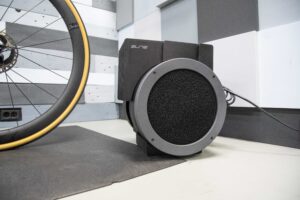
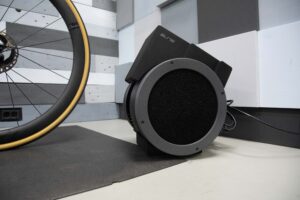
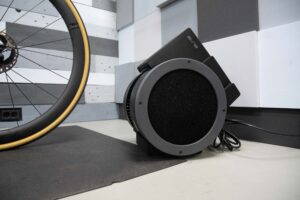
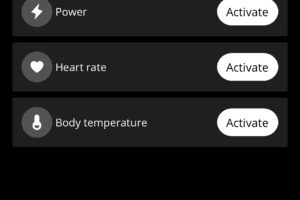
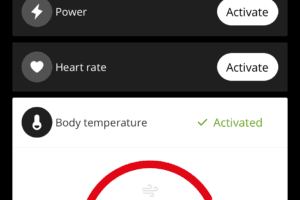
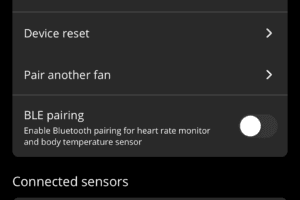
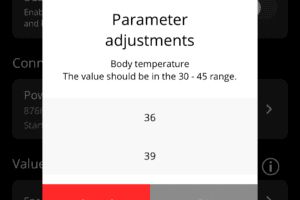
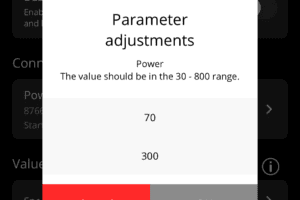
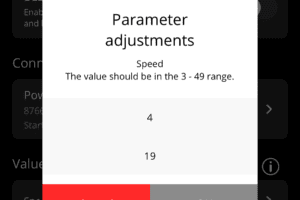
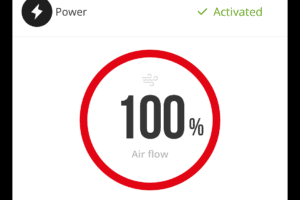
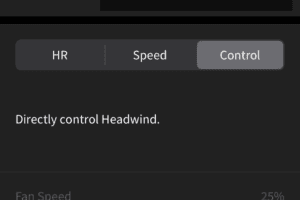
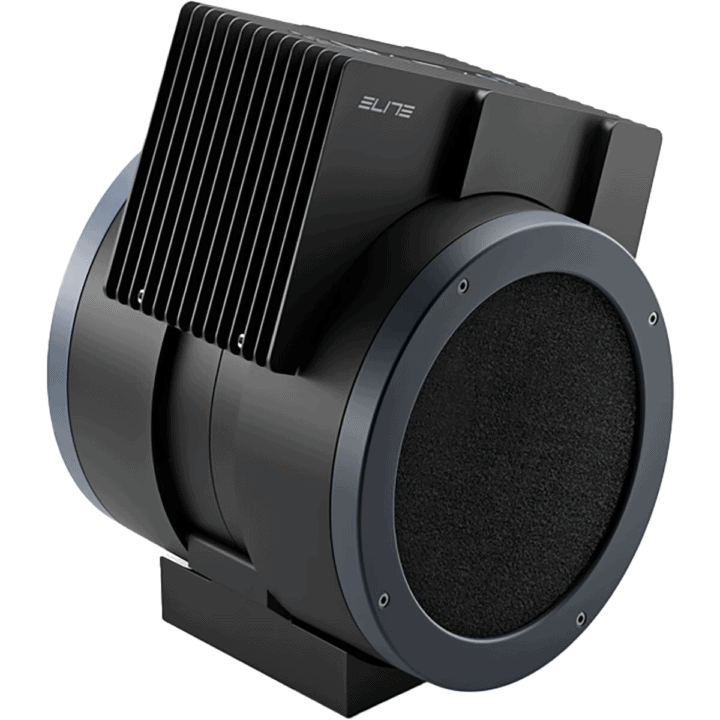
















$350? for a fan! wowzers!
the one i use cost me £25 and does me fine. I connect it to a wifi plug, have a google nest nearby so i can just say “okay google turn on fan” and on it comes. even with those bits total spend is under £60.
think it is a no from me!
Yup, I do wish these companies would spend a bit to add in both Apple Homekit and Google Home support.
What? no comparison to a $19.99 box fan.
I actually include comparison to a $10 fan in the video…
Hi Ray, nice comparaison of the two smart fans. As always great post. In your experience, what is the best way to control the blow? HR, power, core body temp? The combination of Aria and core would be close to 650€ or even more. Does it make any sense ? Thanks.
Personally, I just prefer it to be always-on, at a non-hurricane strength. But everyone is different. My challenges with adaptive control, from virtualy every company is:
Heart rate: Great…until an interval. Then, during the recovery period, as my HR declines but I’m still hot AF, it slows down.
Power: Great during a virtual climb (or other hard effort), but again, once I finish that effort, then it immediately scales back, leaving me high and dry. Or, I guess, hot and wet – without wind.
Speed: The worst of all. Uselessly low on a low-speed climb, and then blazing high while descending. Sure, it’s nice to have it high after the effort, but I’d rather have it during the effort too.
Body temp: This is argueably the best of all of them – because it’s loosely following your body temp, depending on how you configure it. But you’d want to be more conservative in setting this, putting it lower than normal so you can avoid the higher body temp zones. My wife and I (especially my wife), has spent a silly amount of time the last month or two with the CORE temp and heat training, so I’ll more there soon.
I can’t agree more! I’ve tried with speed and HR with my Wahoo fan and nothing works right. In the end, I just turn it to full power after the warmup on TrainerRoad and turn it off at the end of the workout. No need to over-complicate!
Not that I disagree, and it surely is only a workaround, but I think I have been able to live with the limitations by adjusting my heart rate ranges depending on my workout. I can mostly keep the fan at what I think is an appropriate volume of air this way.
The Wahoo has fold out legs at the back. It’s not very adjustable, but you can at least flatten the flow without any propping.
I’ve used the Wahoo one for a while and liked everything about it except for the most important part: The airflow felt weak compared to the Lasko high velocity fan.
Maybe I missed it but does the Elite one have more power than the Wahoo Headwind and how does it compare to the “industrial” fans?
Based on all the information I can find, and just simply comparing the output speeds and airflow volumes from both fans, they seem the same.
I had wanted to build sort of a airflow test frame. And I probably will, using a crapton of tiny streamers, akin to how aerodynamic testing rigs show things. I just ran out of time this week before I had to jump on a flight across two ponds.
Enjoy race week and best wishes for your wife on race day. Aloha!
Thanks for the replay! That setup would be pretty bad-ass even for your already high standards.
Hi,
Great content, as always!
Just one comment about measuring the windspeed at different parts of the fan (4:38): When you measure at the top, you are blocking at the bottom. So if the fan moves the same total volume of air, windspeed increases at the top. When you measure at the bottom, the top is free for wind to move out.
Does wind speed matter? Probably not. It might still be the case that windspeed differs across the fan surface, but the measuring method might have a minor flaw.
Interesting, I’d have to try testing that – hadn’t thought about the blockage impact. However, that would mean that neither of these fans reach anywhere close to their stated top-speed (by a fair margin).
Great article as always!
One small remark regarding carbon filters.
They start counting when they come in contact with air. If you use the fan or not. Unless the carbon filters are stored in an air tight box (like gasmasks) So probably the 500 hours are starting to count after installation in the factory, or after changing in your pain-cave. Unless there is a mechanisme in the fan, which will close the fan airtight after ussage.
And if I remember correctly I’m able to switch between settings on the headwind using the buttons on the fan (sometimes I have a hr drop-out and I will change the headwind to speed or just fan settings, my headwind stands besides me on a table, within arm reach)
And doesn’t the wahoo have a whopping 2 standing positions?
Yeah…thin carbon filters on high volume fan like this is a gimmic. To be effective, they’d need to be unreasonably large (Probably around 55 gallon size.) They might filter out sand off the floor though.
I would just like a filter that stops pet hair.
But any carbon/charcoal filter element would likely be thick enough that it would drastically reduce efficiency and volume. To me, it sounds like their ‘carbon filter’ is a play on weight weenies needing ‘carbon everything’. I guess titanium filters aren’t a thing yet? I wonder what the volume would be if a thinner filter medium was used?
On ‘smart fans’, it’s proof that there’s no such thing. It’s perhaps so smart it’s stupid? It should be smarter to allow for lags before dumping output after high demand intervals. I have 8 fans, and they are all on max for the duration. I sometimes have to adjust the A/C output, but for $350, I guess I’d rather have a wireless outlet strip, and my A/C remote control. (It’s amazing how dropping/raising a degree or two can have such a big impact on riding comfort) But I get the automagic idea for a workout fan. I tend to blank out things when I’m working out, and having something that adjusts itself would be helpful.
This fan seems to be usable and affordable. link to amazon.com
And they seem to be completely sold out, already. It seems to have a lot over the Headwind. Hmm…
Can a DIY filter be used, and would it increase air flow?
I take my Vornado 660 over your $350 smart fan
I use a cheap, box fan with an (infra-red?) Remote control. Bought from a hardware store, It has 12 speed and responds instantly to the remote.
Works for me. YMMV.
DC – “Elite fan has a button to change fan modes (e.g., HR vs manual vs power meter/etc…)”
Wahoo also has a button to change the operating mode. HR -> SPD -> MANUAL
This, plus the Wahoo fan has two adjustable positions – you can pull out extra legs on the back, which is useful if you want to place it higher up, like on a desk.
Ray, how about the noise of both fans at different speeds?
Just love it. Both vendors listed are “out of stock”. Already?
I was able to order one from backcountry and get 20% off with their fall sale. I already have the Elite Justo and Rizer to use it with.
Very nice!
(Also, I just managed to accidentally delete your picture you included..hitting the wrong button, so, I’ve added it back to my reply instead. Doh!)
Needs more sophisticated programming capability. Something simple like a settable lag in speed decrease after a decrease in power, or HR would be an improvement. Maybe also a settable lag in speed increase after an increase in power, as it takes a minute to start getting hot.
Ray, can’t wait for the heat training “review” :) I am on the fence about a Core sensor… mostly waiting for Garmin/ANT+ to make it a standard… I’m scared of Garmin Connect IQ apps : )
Thanks for your great reviews!!
C
Hi Ray,
Thanks for testing. As often more information here then even on the manufacturers page or somewhere else.
Question on setup – where I am not totally sure.
Am using a Tacx Neo 2T + a Garmin watch for HR tonpair with Zwift. Would the Aria take the broadcast message of speed/power from the Tacx and/or the HR Rate off the Garmin? (Venu 2 or epix 2).
Best,
Sebastian
Sorry, a bit behind here.
It should be able to take both, as both are standardized signals.
I think the filter is a GREAT idea. I was a former field engineer and repaired a LOT of mainframe/midrange line printers, as well as normal laser printers and PC’s and servers, etc. Unfiltered fans get clogged up with dust, and then fail. Spending $300+ on a fan that likely is in a dusty shed/garage environment means they _should_ have a filter by default to protect the investment. Elite is onto something there. They’re not marketing it like that though.
Does anyone have any feedback regarding the noise level of the Elite fan?
I bought the Wahoo fan when it was first released, but a couple of years ago it started buzzing when it runs higher velocities (probably because something gradually became loose over the years and started vibrating). It’s now noisy enough that I’m thinking about replacing it with the Elite, but I don’t want to buy a fan that’s too noisy at higher speeds. Thanks!
I can do some quick comparisons at the office this week, but off the top of my head, it wasn’t meaningfully different.
Were you able to do a quick check on the noise level of the fans? I know you’re busy so if you’re not able to I’ll probably just gamble on the Elite. Thanks.
How did this go? I am in the same predicament !
Hey there, my aria fan on low levels gives a lot of humming noise. link to m.youtube.com could you tell if it’s normal or my is defective one?
I just received a new Elite Aria. Fresh out of the box it makes the exact same noises as in your YT video.
I’m a little disappointed about the humming noise at this price point. While it is less noticable at the higher fan speeds it is always audible.
I bought one yesterday (July 7,2025) and have the exact problem. It hums very loudly between 30-80%s so nothing at the lower or highest settings. Elite says it’s normal, I am not so sure. Any one else who has the same experience or are your fans just making regular “air being pushed at a great speed” noise?
Ray, any wise input in this matter? Your expertise is highly appreciated! Thanks!
Hi! I discovered the problem. I also experienced the same buzzing noise, and I completely disassembled the Elite Aria. The problem lies in the plastic motor support, which in my opinion isn’t sufficiently supportive of the weight of the motor and the fan. Therefore, the weight unbalances the fan slightly off-axis, which then brushes against the internal plastic base as it rotates. Once opened, if you look closely, you can see any signs of rubbing, if any.
Thanks for the Insight Riccardo! Very useful!